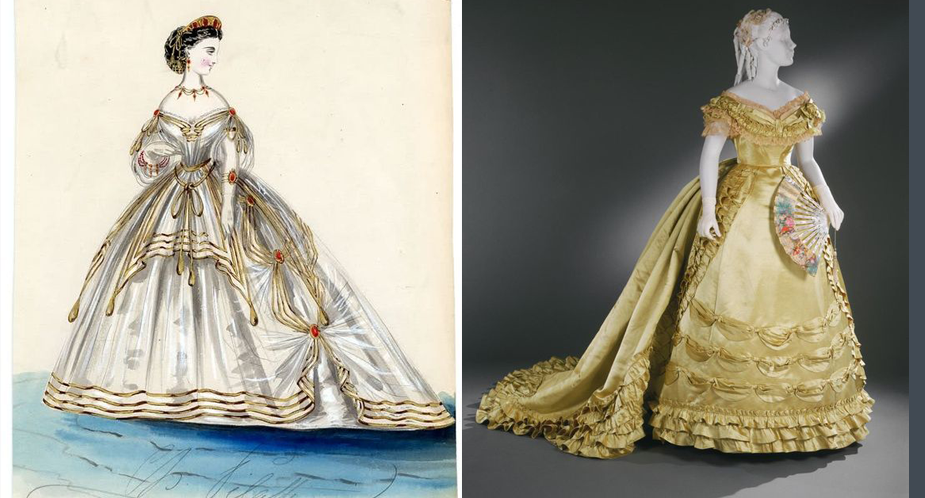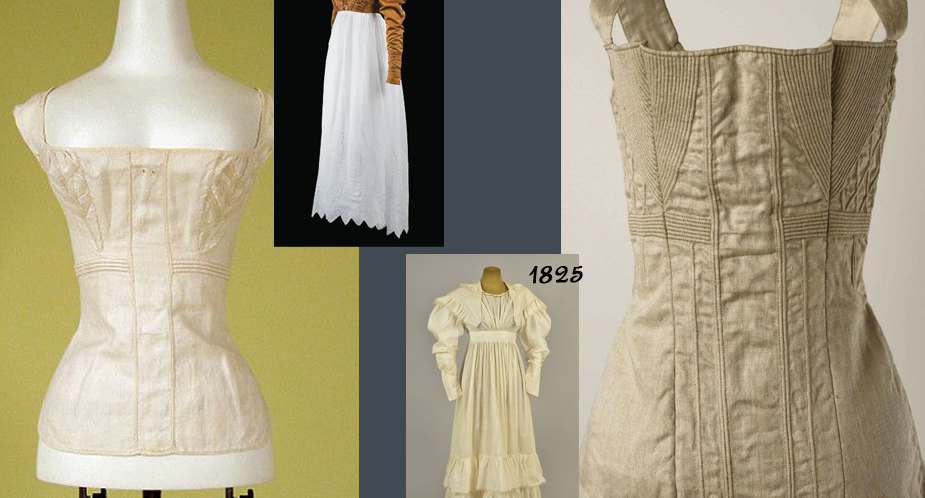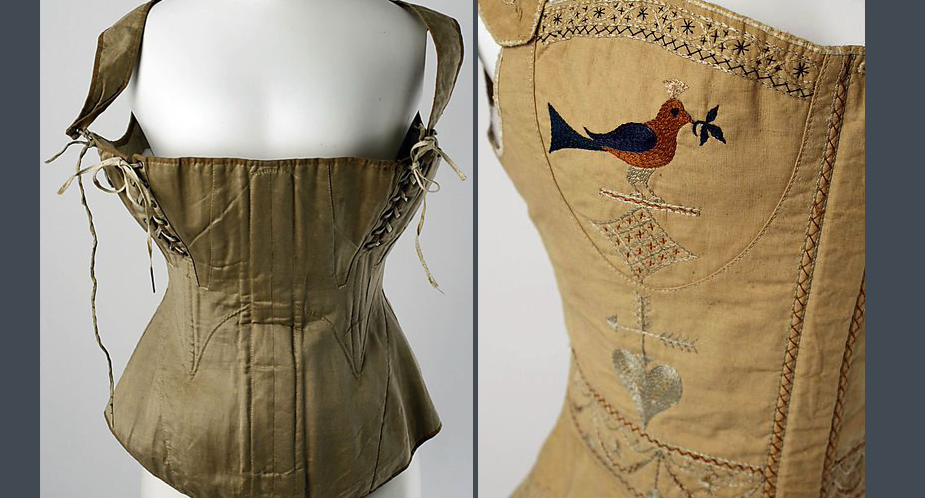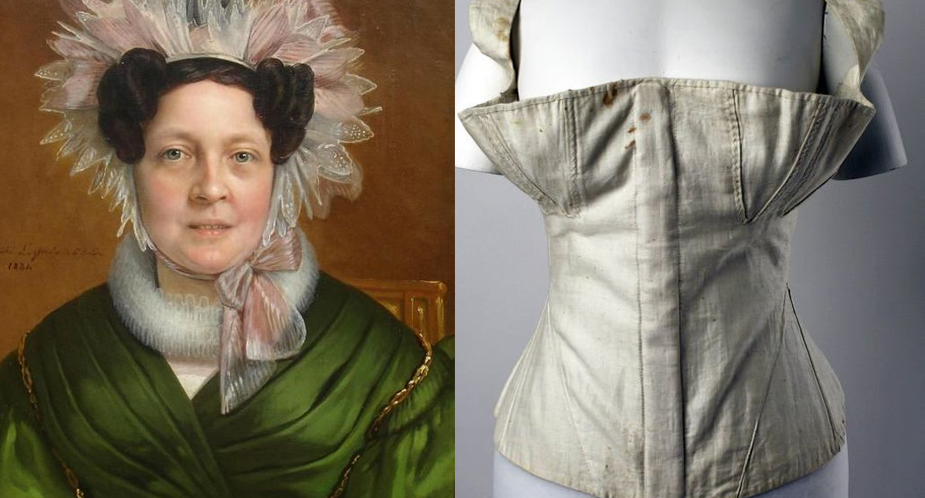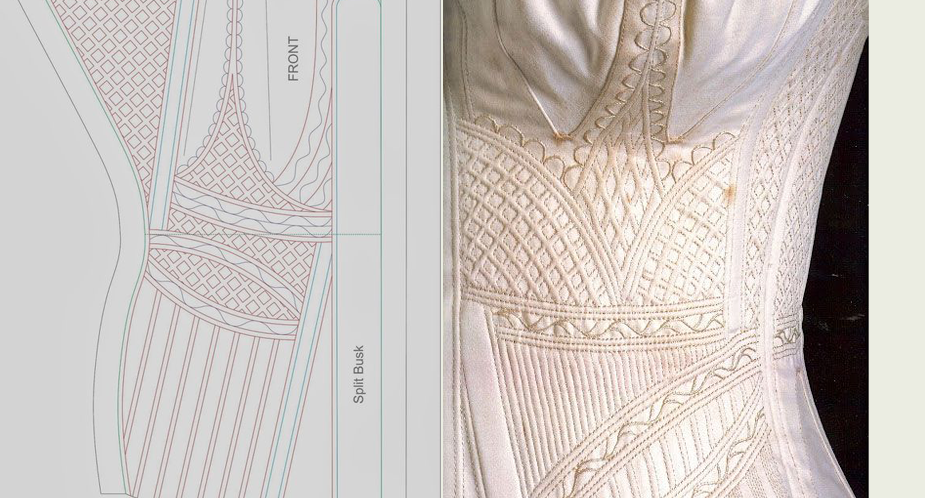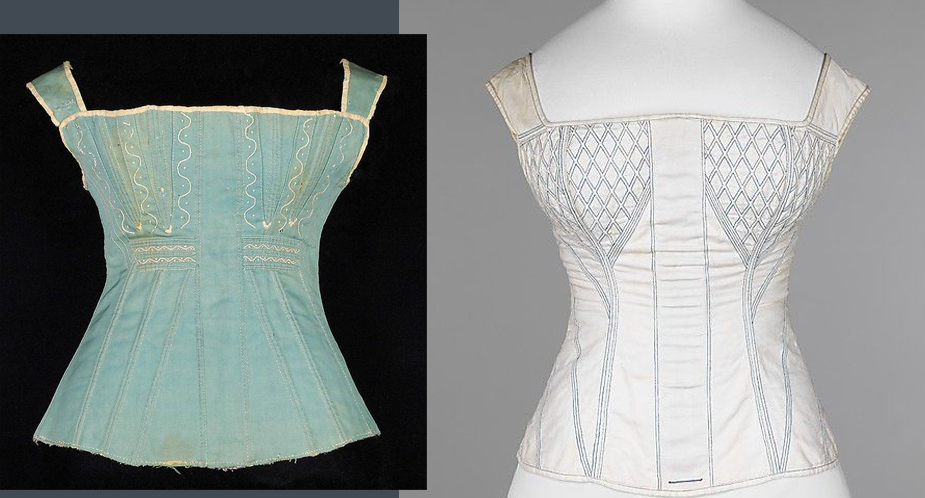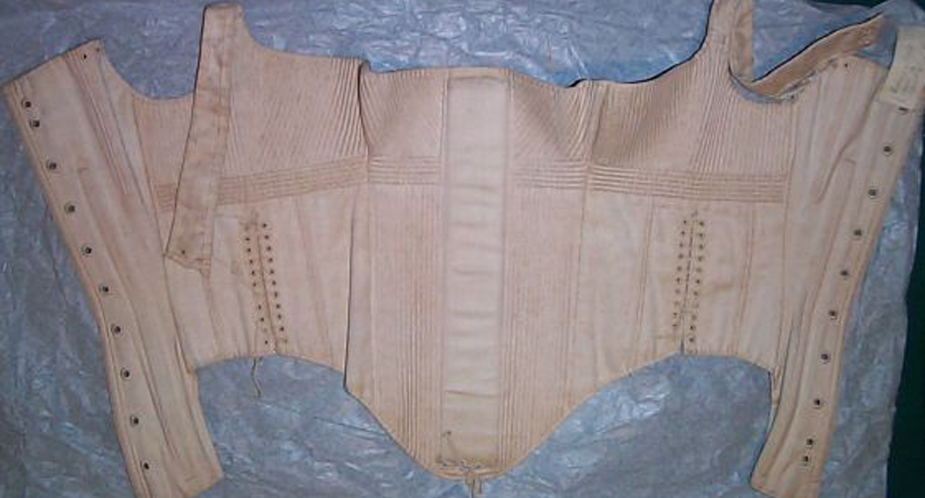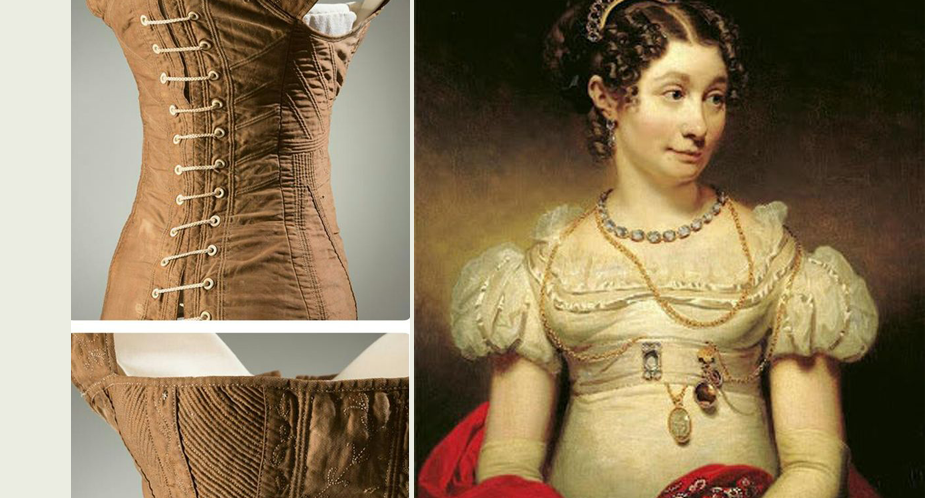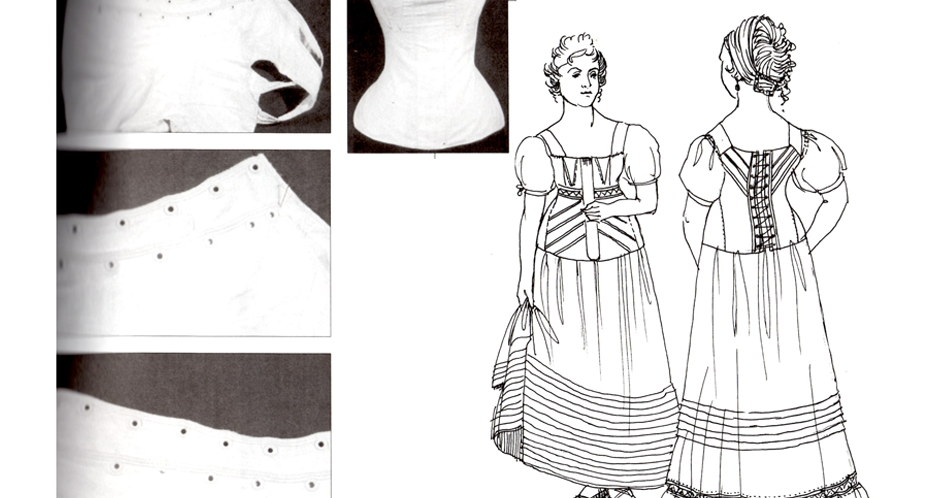Although Queen Victoria is credited with what would become known as “Victorian Fashion”, it was really designer Charles Worth, and Englishman with a fashion house in Paris, that initiated the next revolution in women’s fashion. (1868 Gown and sketch by the House of Worth in Paris)
